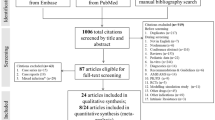Abstract
Serum bactericidal activity against Pseudomonas aeruginosa was determined in six volunteers 1 and 4 h after administration of 2 g ceftazidime, 4 g piperacillin, 500 mg imipenem, 80 mg tobramycin and four combinations of these agents. Ceftazidime produced the highest serum bactericidal titers, killing 100% and 86% of the 50 Pseudomonas aeruginosa strains tested after 1 and 4 h respectively at a serum dilution of 1∶8. Imipenem had lower serum bactericidal titers than ceftazidime, killing 88 % of the isolates after 1 h at a serum dilution of 1∶8. The combination showed only slightly higher titers. Killing curves were determined for nine strains of Pseudomonas aeruginosa using undiluted volunteer serum drawn 1 h after administration of the antibiotics. The combinations ceftazidime/tobramycin and piperacillin/ tobramycin exhibited higher killing activity than the single drugs. As the activity of the aminoglycosides could be underestimated on the basis of their low serum bactericidal titers, it is concluded that determination of these titers is inappropriate for evaluating the efficacy of the aminoglycosides.
Similar content being viewed by others
References
Andriole, V. T.:Pseudomonas bacteremia: can antibiotic therapy improve survival? Journal of Laboratory Clinical Medicine 1979, 94: 196–200.
Baltch, A. L., Grifin, P. A.:Pseudomonas aeruginosa bacteremia: a clinical study of 75 patients. American Journal of Medical Science 1977, 274: 119–126.
Bodey, G. P., Jadeja, L., Elting, L.:Pseudomonas bacteremia: retrospective analysis of 410 episodes. Archives of Internal Medicine 1985, 145: 1621–1629.
Machka, K., Dickert, H., Braveny, I.: In vitro activity of piperacillin compared with that of amipicillin, ticarcillin, azlocillin and mezlocillin. Arzneimittelforschung-Drug Research 1980, 30: 304–307.
Machka, K., Baierl, W., Braveny, I.: Comparative synergistic activity of netilmicin-piperacillin versus gentamicin-piperacillin. European Journal of Clinical Microbiology 1982, 1: 238–242.
Reller, L. B., Stratton, C. W.: Serum dilution test for bactericidal activity. II Standardization and correlation with antimicrobial assays and susceptibility tests. Journal of Infectious Diseases 1977, 136: 196–204.
Pennington, J. E., Stone, R. M.: Comparison of antibiotic regimens for treatment of experimental pneumonia due toPseudomonas. Journal of Infectious Diseases 1979, 140: 881–889.
Lumisch, R. M., Norden, C. W.: Therapy of neutropenic rats infected withPseudomonas aeruginosa. Journal of Infectious Diseases 1976, 133: 538–547.
Rusnak, M. G., Drake, T. A., Hackbarth, C. J., Sande, M. A.: Single versus combination antibiotic therapy for pneumonia due toPseudomonas aeruginosa in neutropenic guinea pigs. Journal of Infectious Diseases 1984, 149: 980–985.
Anderson, E. T., Young, L. S., Hewitt, W. L.: Antimicrobial synergism in the therapy of gram-negative rod bacteremia. Chemotherapy 1978, 14: 45–54.
Klastersky, J., Meunier-Carpentier, F., Prevost, J. M.: Significance of antimicrobial synergism for the outcome of gram-negative sepsis. American Journal of Medical Science 1977, 273: 157–167.
Lagast, H., Zinner, S. H., Klastersky, J.: Serum bactericidal activity of moxalactam and cefotaxime with and without tobramycin againstPseudomonas aeruginosa andStaphylococcus aureus. Antimicrobial Agents and Chemotherapy 1981, 20: 539–541.
Standiford, H. C., Drusano, G. L., Fitzpatrick, B., Tatem, B., Schimpff, S. C.: Bactericidal activity of ceftazidime in serum compared with that of ticarcillin combined with amikacin. Antimicrobial Agents and Chemotherapy 1984, 26: 339–342.
Drake, T. A., Hackbarth, C. J., Sande, M. A.: Value of serum tests in combined drug therapy of endocarditis. Antimicrobial Agents and Chemotherapy 1983, 24: 653–657.
Weinstein, M. P., Stratton, C. W., Ackley, A., Hawley, H. B., Robinson, P. A., Fisher, B. D., Alcid, D. V., Stephens, D. S., Reller, L. B.: Multicenter collaborative evaluation of a standardized serum bactericidal test as a prognostic indicator in infective endocarditis. American Journal of Medicine 1985, 78: 262–269.
Author information
Authors and Affiliations
Rights and permissions
About this article
Cite this article
Braveny, I., Machka, K. & Milatovic, D. Evaluation of novel antipseudomonal drugs using the serum bactericidal activity test. Eur. J, Clin. Microbiol. 5, 119–123 (1986). https://doi.org/10.1007/BF02013481
Issue Date:
DOI: https://doi.org/10.1007/BF02013481




